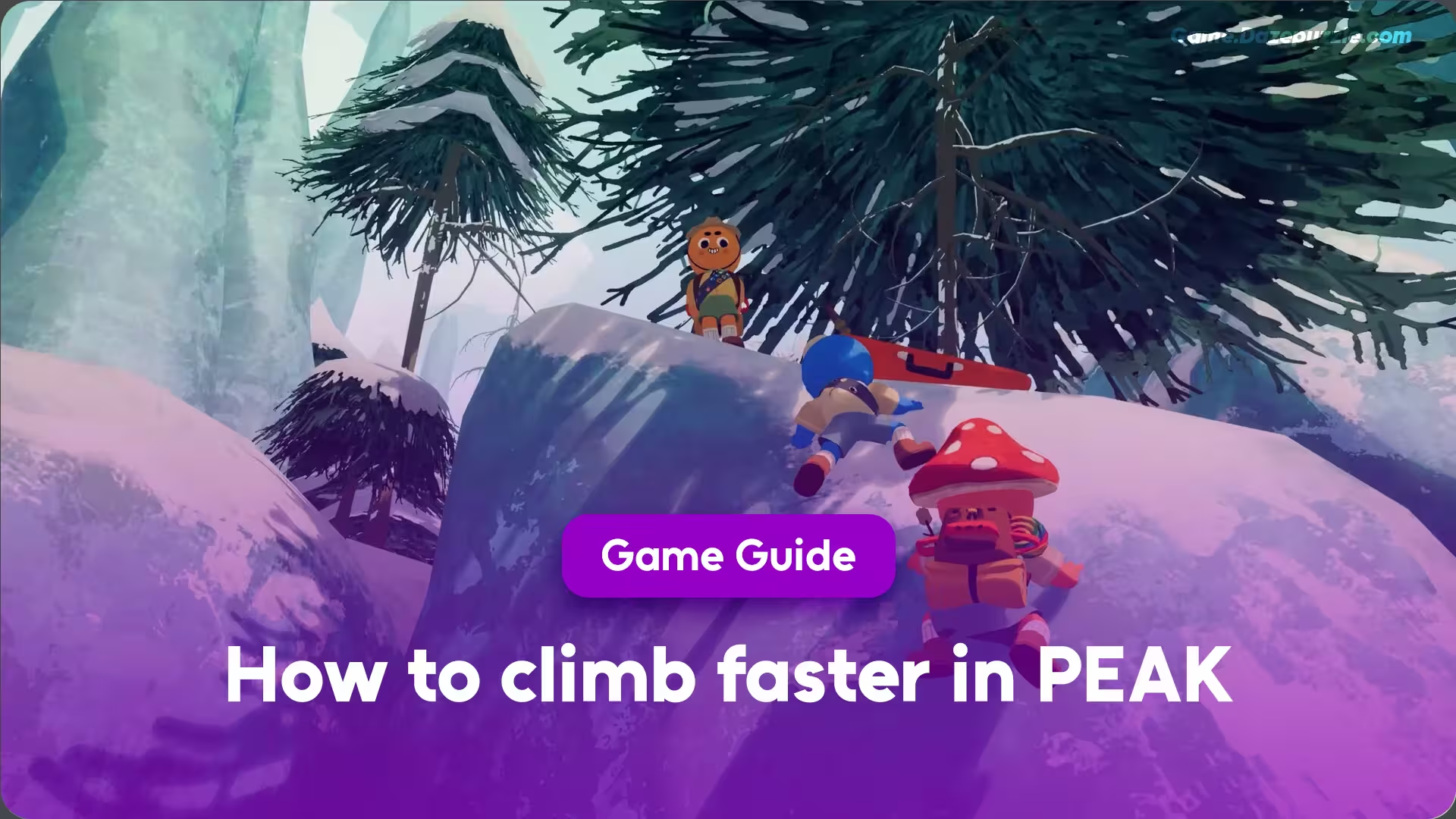You’re there. Heart pounding, fingers aching. The summit is so close you can almost taste the crisp, clean air. You reach for the next handhold, a small, unassuming ledge that promises victory. And then, it happens. Your vision blurs, your character lets out a weary sigh, and you begin the long, soul crushing slide back down the face of the mountain. Every foot of progress, every carefully planned move, erased in seconds. You’ve just fallen, and now you’re right back where you started, staring up at the monolithic beast you have to climb all over again.
If this sounds familiar, take a deep breath. You are not alone. Welcome to the beautifully brutal world of PEAK, a game that isn’t just about climbing, but about survival, strategy, and understanding the rhythm of the mountain. You’ve searched for how to climb faster in PEAK, and you might think the answer lies in frantic, speedy movements and risky jumps. But I’m here to tell you a little secret: the key to climbing faster is actually to slow down, think smarter, and become one with your stamina bar.
This guide will change the way you see the mountain. We’re going to transform you from a hopeful scrambler into a seasoned mountaineer. We’ll ditch the frustration and replace it with the quiet confidence of someone who knows the path, not just the goal. So grab your gear, take a sip of water, and let’s begin our journey to the top.
What’s In Our How to climb faster in PEAK
The Heart of the Mountain: Understanding Your Lifeline
Before we take a single step up that rock face, we need to have a very honest chat about the single most important thing in your entire climbing career: that colorful bar at the bottom of your screen. This isn’t just a stamina meter from other games. In PEAK, it’s your lifeline. It’s your story. It’s a living, breathing representation of your character’s condition, and learning to read it is the first and most critical step to mastering the climb.
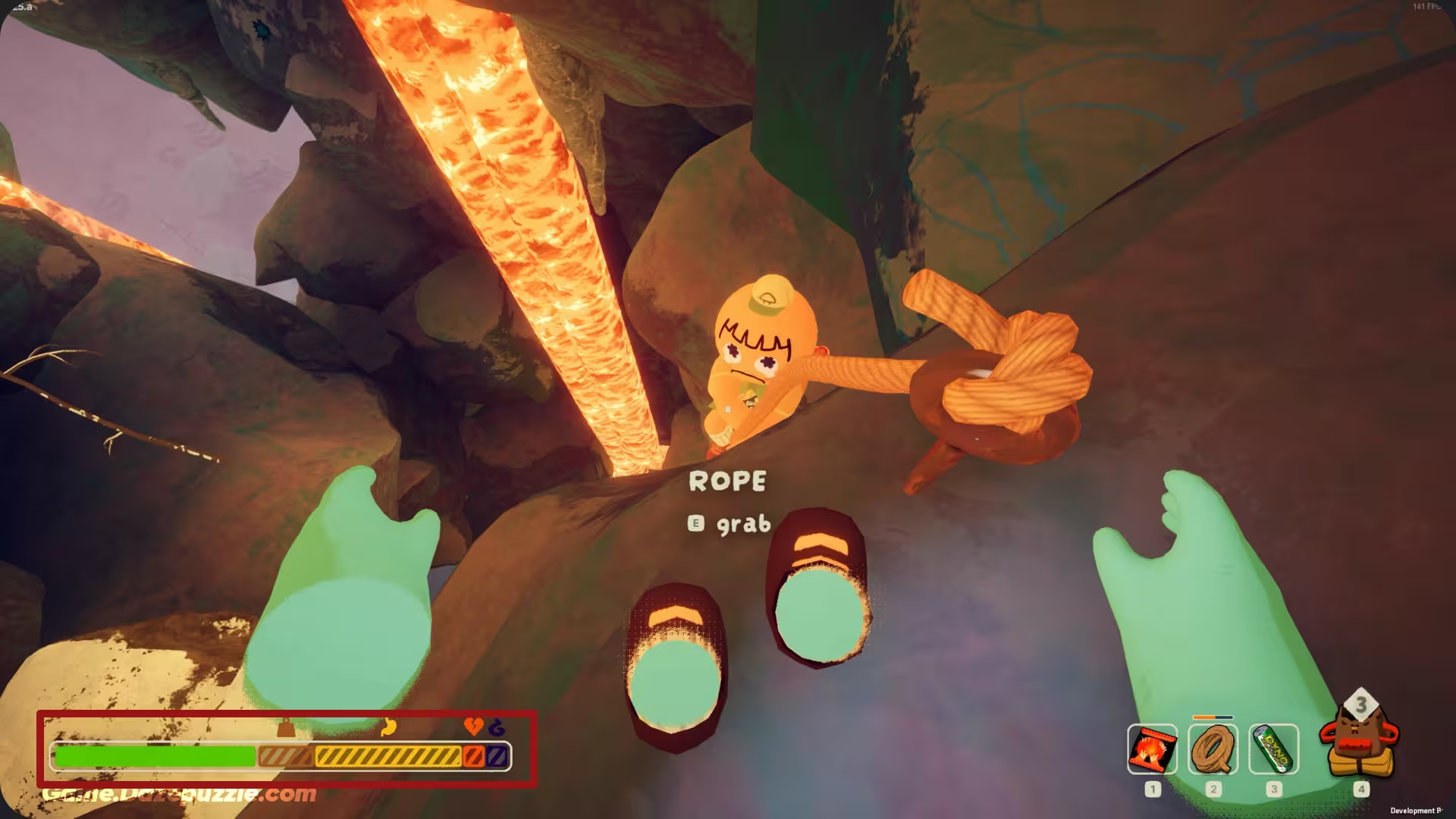
Think of it as your entire life force, all in one convenient place. The vibrant green portion is your usable energy, your go juice for scaling cliffs and leaping across chasms. As you climb, you’ll see that green shrink. Simple enough, right? But what about all those other colors that start creeping in, eating away at your precious green? This is where the true genius of PEAK lies.
The Brown Block of Burden
See that brown section appearing on the right? That’s the weight of the world or at least, the weight of everything in your backpack. Every shiny rock, every extra bandage, every “just in case” item you pick up adds to this block. It’s a constant, physical reminder that what you carry, you must carry up the mountain. Your maximum stamina is literally being crushed by the weight of your inventory.
The Gnawing Yellow of Hunger
That yellow bar that slowly but surely starts to grow is your hunger. It’s a quiet threat that’s always there, a ticking clock reminding you that your body needs fuel. The hungrier you get, the less energy you have to spare. Neglect it, and you’ll find your potential for climbing shrinks dramatically, even if your backpack is empty.
The Angry Red of Injury
A misjudged jump, a slip from a high ledge, and suddenly, a startling red chunk is taken out of your lifeline. This is an injury. It’s a painful, immediate penalty for a mistake. Unlike hunger, it doesn’t creep in; it slams into your bar, instantly robbing you of a huge portion of your stamina until you can patch yourself up.
The Sickly Hues of Poison and Cold
Sometimes you’ll see purple or blue sections appear. These are the mountain’s environmental attacks. A bite of a suspicious looking mushroom can leave you poisoned (purple), making you feel weak and draining your energy. Getting caught in a blizzard in the alpine biome will chill you to the bone (blue), making your movements sluggish and your stamina pool frigid and small.
Why is this so important? Because climbing faster isn’t about pushing a button more rapidly. It’s about managing these colors. It’s about looking at your bar and understanding the story it’s telling you. “I’m tired because I’m carrying too much,” or “I can’t make that climb because I’m starving.” Your first step to a faster ascent is to keep that bar as green as possible.
The Climber’s Golden Rule: Think Like a Turtle, Not a Hare
Our natural instinct in a game is to go, go, go. We want to rush to the objective, and in PEAK, the objective is always up. But this instinct is a trap. The single biggest time waster in this game isn’t a slow climb; it’s a long fall. Every time you fall, you lose minutes, sometimes even a full half hour of progress. The true way to climb faster is to climb smarter by ensuring you never, ever fall. This brings us to the Golden Rule: Plan your climb in chunks.
Never look at a giant wall and think, “I’m going to the top.” Instead, look at that wall and find your first resting spot. It might be a small ledge just a few feet up. It could be a flat topped rock or a sturdy looking tree branch. That is your goal. Your entire world should shrink to that one, single destination.
Climb to it. Sit down. Let that beautiful green bar fill back up completely. While you’re resting, don’t just stare at your character. Look up. Find your next resting spot. Plan your route. See that path that looks a little shorter but is a sheer vertical climb? Now look to the left. See that longer path that zigs and zags but has three or four lovely ledges on the way? That is your path. The longer, safer path is always, without exception, faster than the risky shortcut that might lead to a fall.
This is a mental shift. You must start seeing the mountain not as a race course, but as a series of puzzles. Each puzzle is “How do I get from this safe spot to that safe spot with plenty of stamina to spare?” Solve enough of these small puzzles, and you’ll find yourself at the summit, wondering why you ever struggled before.
And what if you get halfway through a puzzle and realize you made a mistake? What if that handhold is just a bit too far? Do not, under any circumstances, attempt a desperate, low stamina jump. Remember this: climbing down costs almost zero stamina. It feels wrong. It feels like you’re losing progress. But a controlled descent to a previous safe spot to rethink your route is infinitely faster than an uncontrolled descent to the very bottom of the mountain.
Your Backpack: A Tool and a Trap
Your inventory is a double edged sword. On one hand, it holds the tools that will save your life. On the other, every single item is a stone pulling you back down to earth. Mastering the balance of what to carry is a cornerstone of efficient climbing.
A beginner hoards everything. They see an item and their brain screams, “I might need this later!” A veteran walker past that same item without a second glance, because they know that weight is a far greater enemy than the lack of a third bandage.
Your goal is to become a minimalist mountaineer. Here’s how you think about your inventory:
Food is Fuel, Not Treasure
You need food, absolutely. But you don’t need a pantry on your back. Carry enough cooked food for the next leg of your journey. When you reach a campfire, cook what you’ve foraged and eat your fill. You can always find more. Two or three high quality cooked meals are far better than a dozen random berries weighing you down.
Tools Have a Purpose
Don’t carry a tool if you don’t have a plan for it. That Chain Launcher is an amazing item, but if you’re in the starting beach biome, it’s just dead weight. Save powerful traversal tools for the later, more difficult biomes where they can help you skip entire sections that would otherwise be impossible. A Piton is one of the best items in the game, but carrying three of them is probably overkill and will gimp your stamina.
Teamwork Makes the Dream Work (and the Bag Lighter)
If you’re playing in a group, you can manage weight with incredible efficiency. You don’t all need to carry medical supplies. Designate one person as the “medic” to hold the medkits and bandages. Designate another as the “quartermaster” to hold onto key tools like launchers or extra rope. By distributing the load, everyone else can climb with a much lighter pack and more stamina, making the whole team faster and safer. You can even throw items to each other across gaps or up ledges to pass them along!
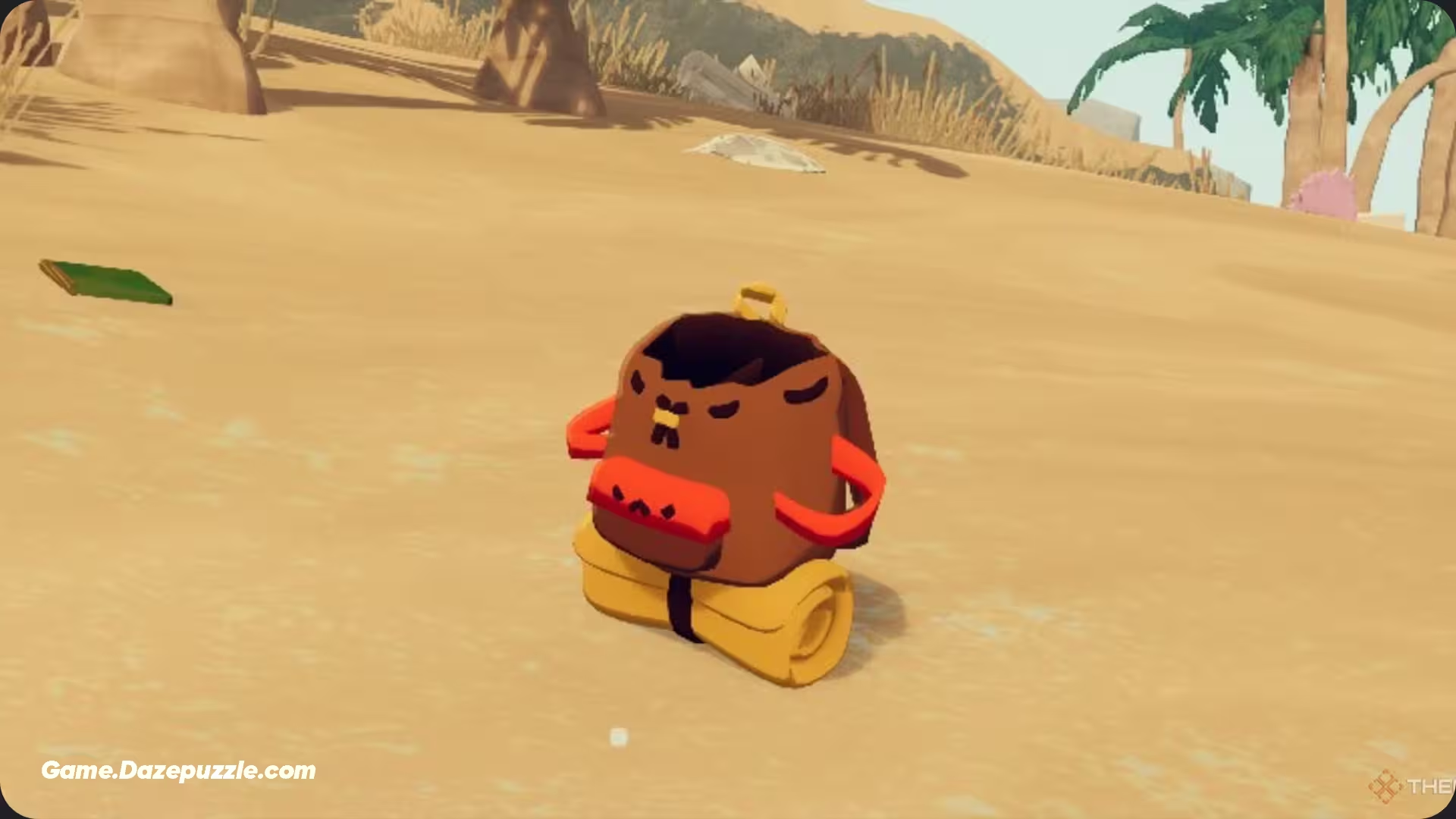
Don’t be afraid to drop things. If you find a better item, make a choice. Is this new tool worth more than what I’m already carrying? If your brown weight bar is taking up a significant chunk of your stamina, it’s a sign that you need to have a garage sale, right then and there. Your stamina will thank you for it.
A Mountain Feast: The Art of Survival Cooking
Hunger is the silent killer of climbs. It’s that yellow bar that just keeps growing, relentlessly eating away at your potential. The only way to fight it is to eat, but a smart climber knows that what you eat and how you eat it make all the difference. The number one rule of mountain cuisine is: Cook Everything.
Finding a campfire is like finding an oasis in the desert. It’s a moment of respite, a chance to heal, and most importantly, a chance to upgrade your food. Any food item, from a humble berry to a piece of honeycomb, becomes significantly more potent when cooked. It will restore more hunger and often provide a bigger stamina boost.
Make it a ritual. Every time you and your team reach one of the campfires that separate the biomes, your first order of business should be to cook everything you’ve gathered. Eat a big, cooked meal to fill your hunger bar completely, then cook the rest of your supplies to take with you on the next leg of the journey. Starting a new biome with a full stomach and a couple of well cooked meals in your pack is like starting with a massive head start.
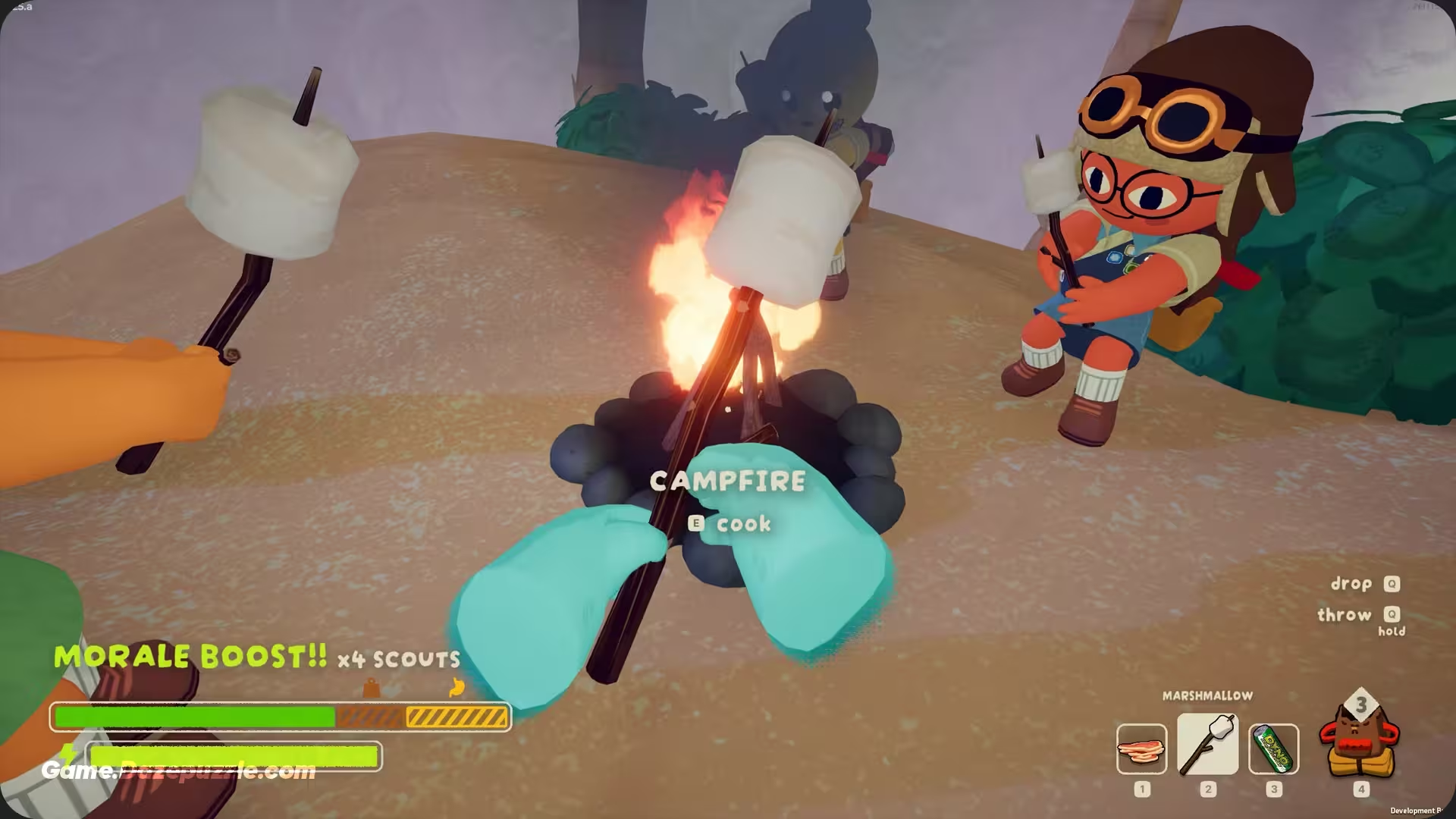
Be a savvy forager, too. Not all plants are created equal. While you’ll learn the specifics over time, a good rule of thumb is to be cautious with unfamiliar flora. Some mushrooms can poison you, setting your progress back significantly. Stick to reliable food sources until you know for sure what’s safe to eat.
Tools of the Trade: Mastering Your Gear
While your own planning and stamina management are your primary skills, the right tool at the right time can feel like a miracle. These items can turn an impossible wall into a staircase or provide a desperately needed moment of rest. Knowing what they do and, more importantly, when to use them, will elevate your climbing game.
The Piton
This is arguably the most valuable tool for a climber. When you’re faced with a long, sheer cliff face with no natural ledges, a Piton is your lifeline. You can place it on the wall, and it creates a small anchor point where you can hang and recover your entire stamina bar. These are incredibly powerful. Don’t waste them on short climbs. Save them for those moments when you look up, see no resting spots, and feel a sense of dread. One Piton can conquer a wall that would otherwise be a run ender.
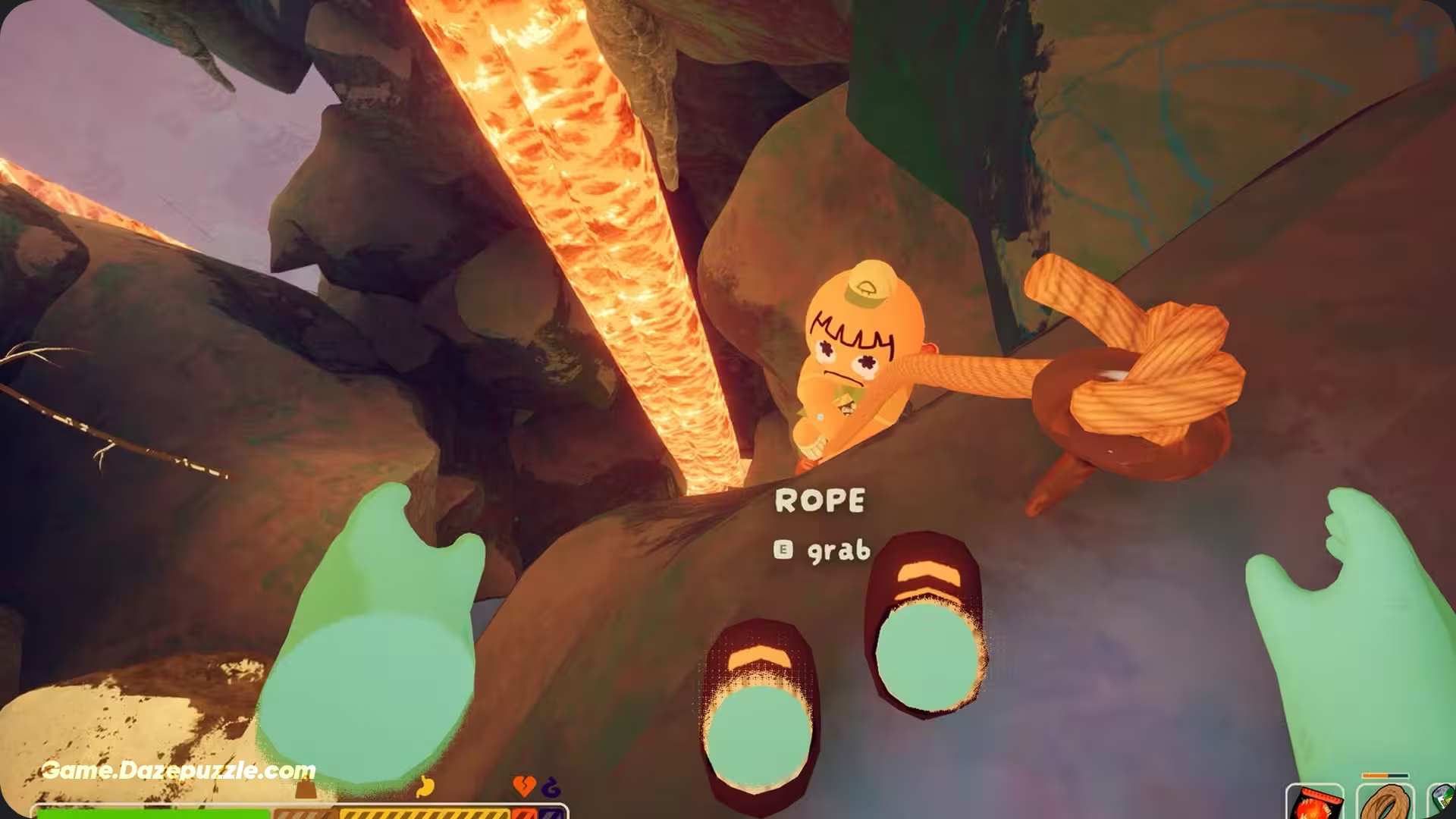
Ropes, Chains, and Launchers
The mountain is often crisscrossed with ropes and chains left by those who came before. Using these is always more stamina efficient than climbing a bare wall. But sometimes, there is no rope where you need one. This is where launchers come in. The Rope Launcher and Chain Launcher allow you to create your own paths. These are high tier, strategic tools. The best advice is to save them for the final, fiery biome: The Kiln. The climbs there are the hardest in the game, and a well placed chain can allow you to bypass a section that could take many frustrating, and dangerous, attempts.
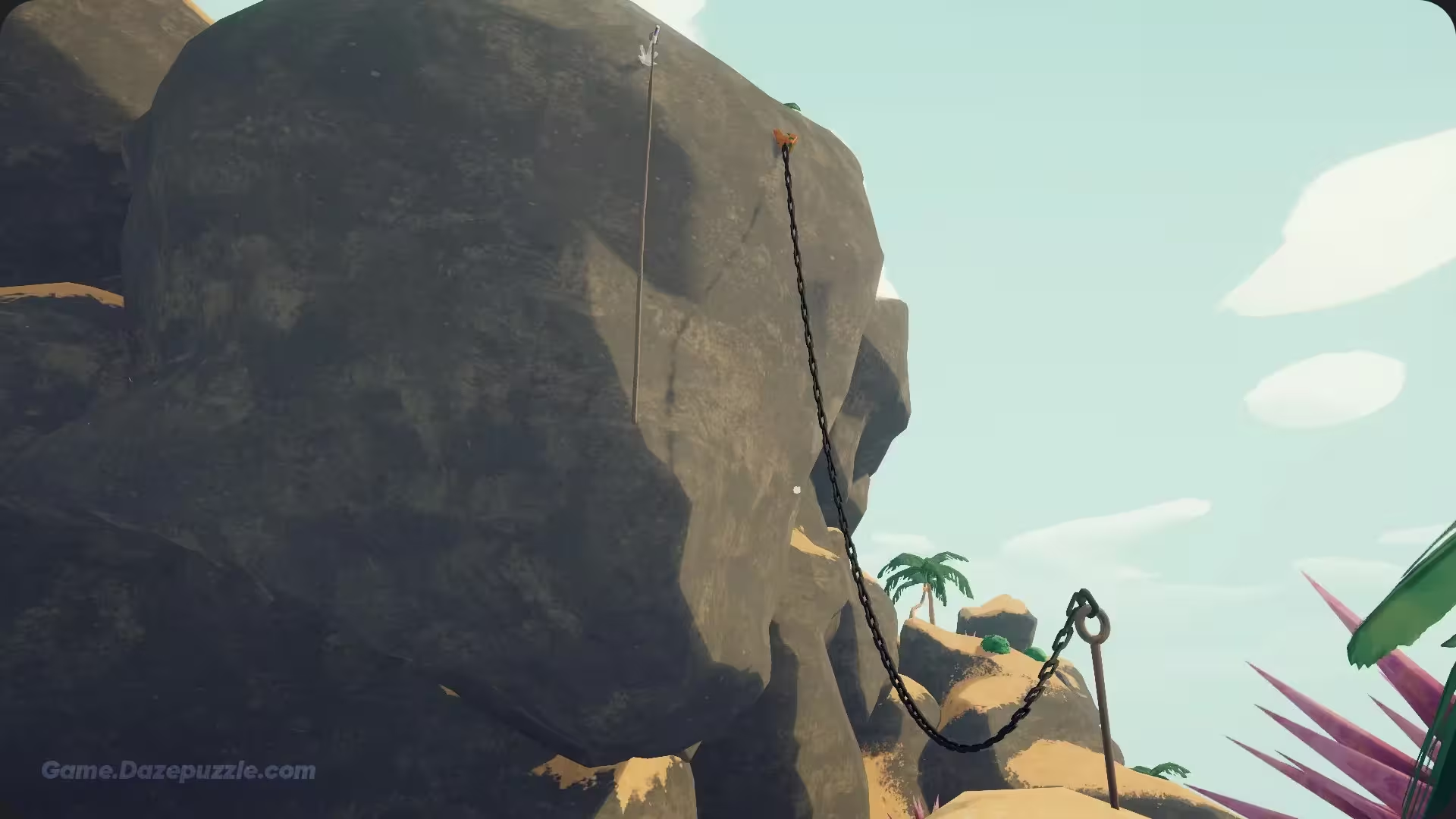
Shelf Shrooms
These are wonderfully versatile little tools. You can throw one against a wall to create a temporary mushroom platform. It’s a perfect little stepping stone to get you past a tricky spot or give you a brief moment to catch your breath. They aren’t as permanent as a Piton, but they are more common and can solve many small scale climbing puzzles.
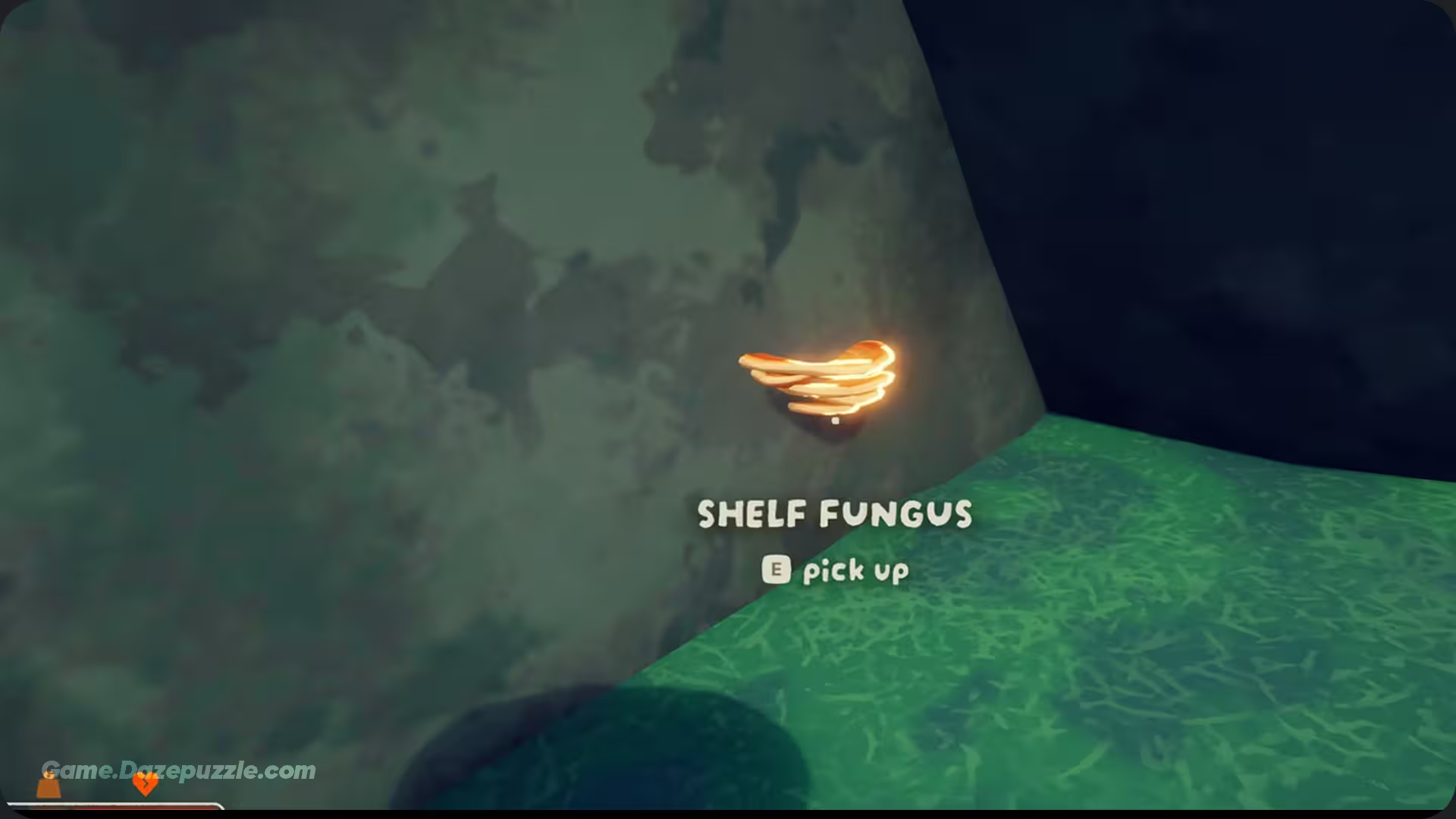
The Big Lollipop & Energy Drinks (The Stamina Bar Secret)
These items give you a temporary, secondary stamina bar. As we discussed, a common mistake is to use this bar for climbing. Don’t. The secret is that the game’s code that slows your climbing speed when your stamina is low only kicks in when your primary bar is nearly depleted. If you have a secondary bar active, that threshold is extended. This means that by simply having an energy drink active, you can climb faster and for longer using your main green bar, because the speed penalty is held at bay. Think of it as a passive buff, a safety net. Keep that secondary bar full as an emergency reserve and enjoy the passive speed boost it gives to your regular climbing.
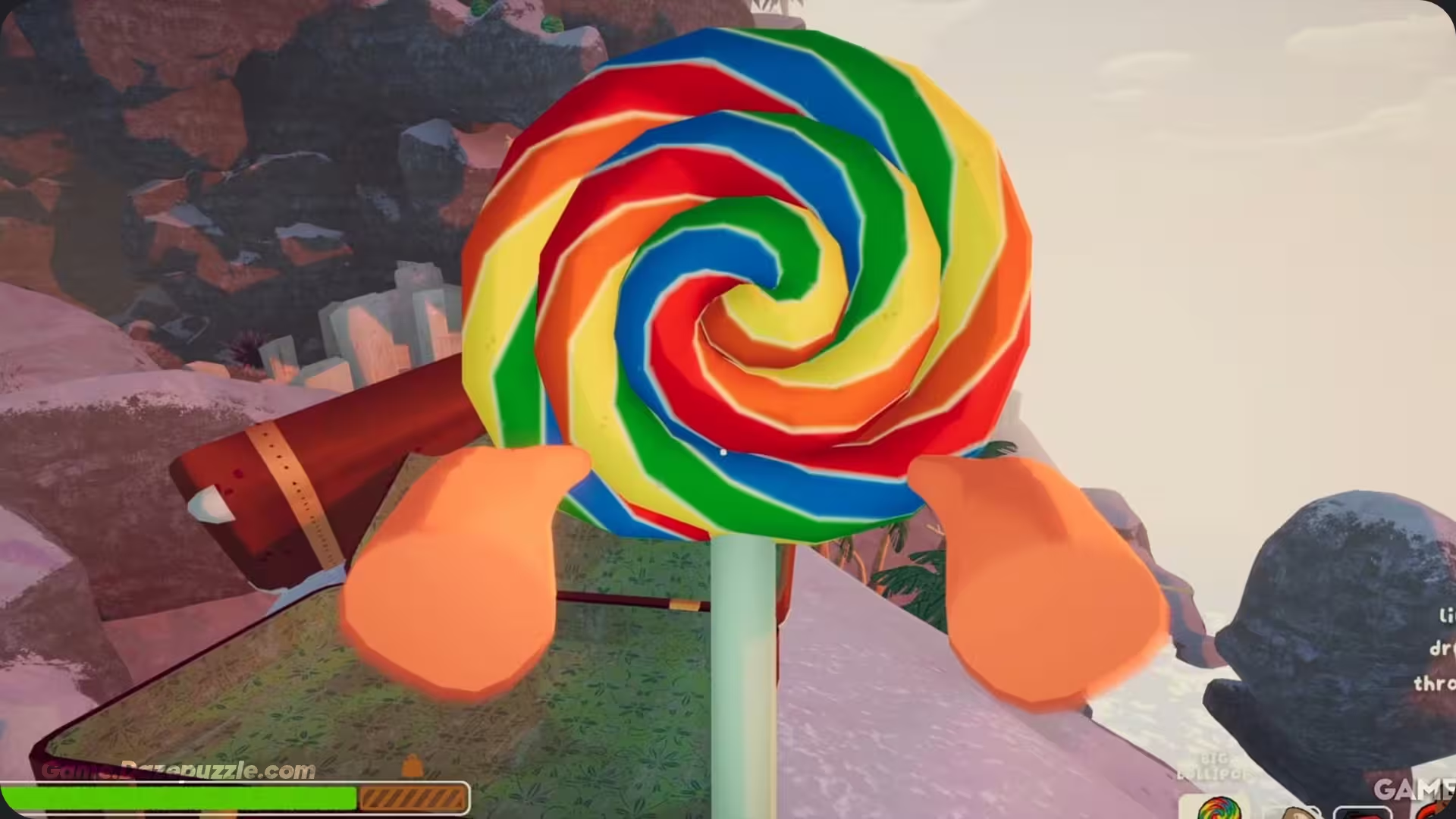
Stronger Together: The Power of Teamwork
PEAK can be played solo, but it truly shines as a cooperative experience. A well coordinated team can move up the mountain with a speed and safety that a lone climber can only dream of. Climbing faster in a group isn’t just about having friends to chat with; it’s about using mechanics that only exist in multiplayer.
The Helping Hand
If you’ve secured a spot on a ledge, you can turn to a teammate still climbing below you and pull them up (Right Click by default). This is huge. It can save a friend who is about to run out of stamina and fall, saving the entire team a massive amount of time. Always be looking for opportunities to lend a hand.
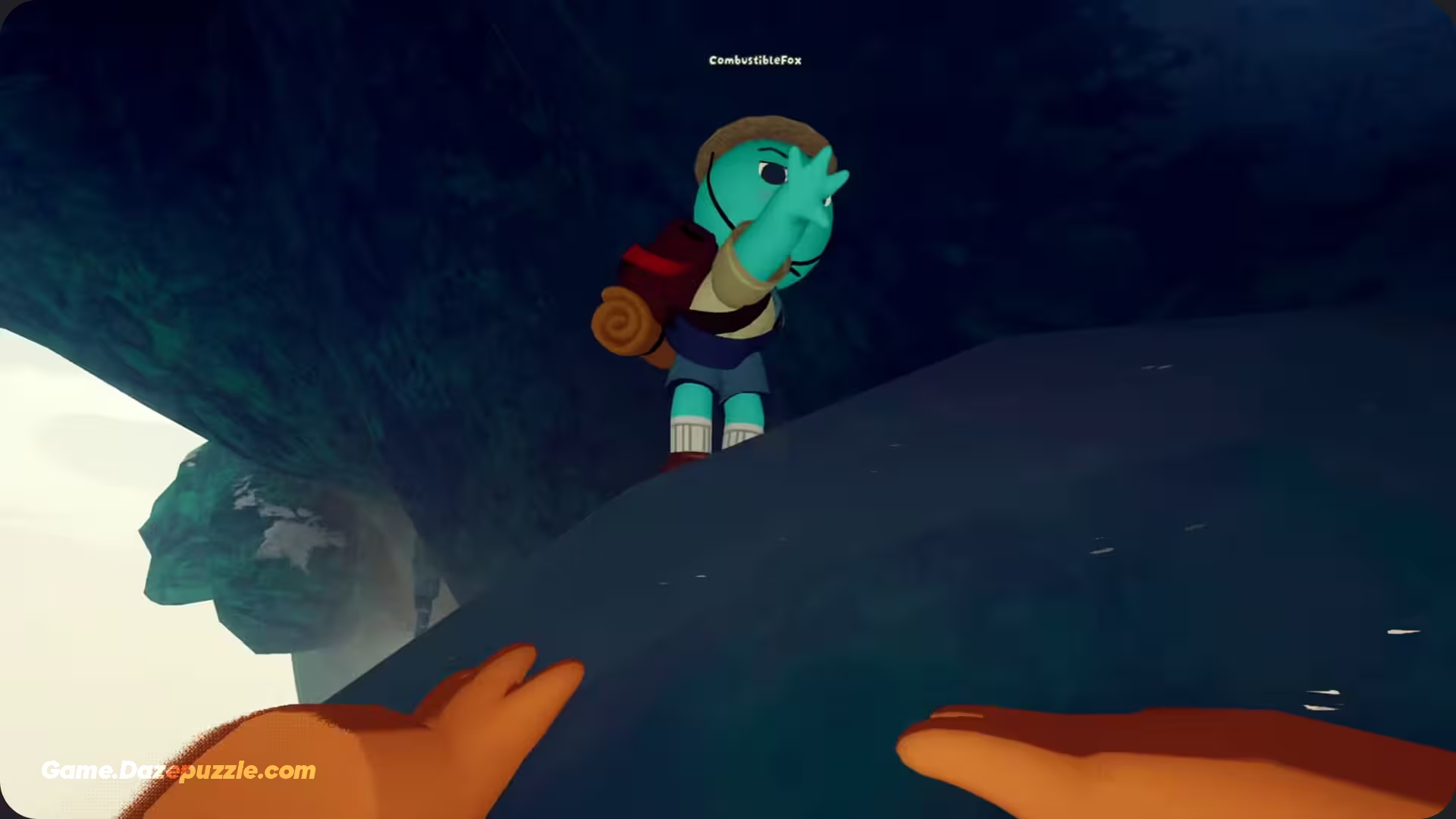
The Boost
This is a classic video game trick that works wonders in PEAK. Have one player crouch, and another can stand on their head. When the crouched player stands up or jumps, they can launch their friend upwards, allowing them to reach a ledge that would be inaccessible alone.
Stay Together
This isn’t just for moral support. The game has a terrifying guardian known as the Scoutmaster. This shadowy entity specifically hunts players who stray too far ahead or fall too far behind the rest of their group. If your screen starts to get staticky and you’re all alone, it’s probably too late. The Scoutmaster will find you. Sticking together is a literal survival mechanic.
Climbing solo is a much harder, more meditative challenge. If you choose to go it alone, all the principles of planning, patience, and weight management become ten times more important. You are your only safety net.
And here’s a final pro tip for solo players, or any team learning a new mountain: the map changes daily. Because of this, consider making your first run of the day on the “Tenderfoot” difficulty. The threats are lower and you have more breathing room to explore. Think of it as a reconnaissance mission. Your goals for this easy run are simple:
- Learn the specific layout for the day.
- Identify the best and safest paths up the different biomes.
- Map out a rough strategy for your real attempt later.
Once you’ve done this, tackling the mountain on normal difficulty will feel completely different. You’ll move with a knowledge and confidence that makes the climb dramatically faster and smoother.
You now have the knowledge. You understand that speed in PEAK is not about haste, but about efficiency. It’s about wisdom, not recklessness. It’s about respecting the mountain, managing your energy, and working with your tools and your team.
So go on. Face that mountain again. But this time, you’re not just a climber! You’re a strategist. You’re a survivor. Look for the path, manage your lifeline, and take it one safe step at a time. The summit is waiting for you, and this time, you’ll make it.
Thanks for keeping up with Game.Dazepuzzle.com

